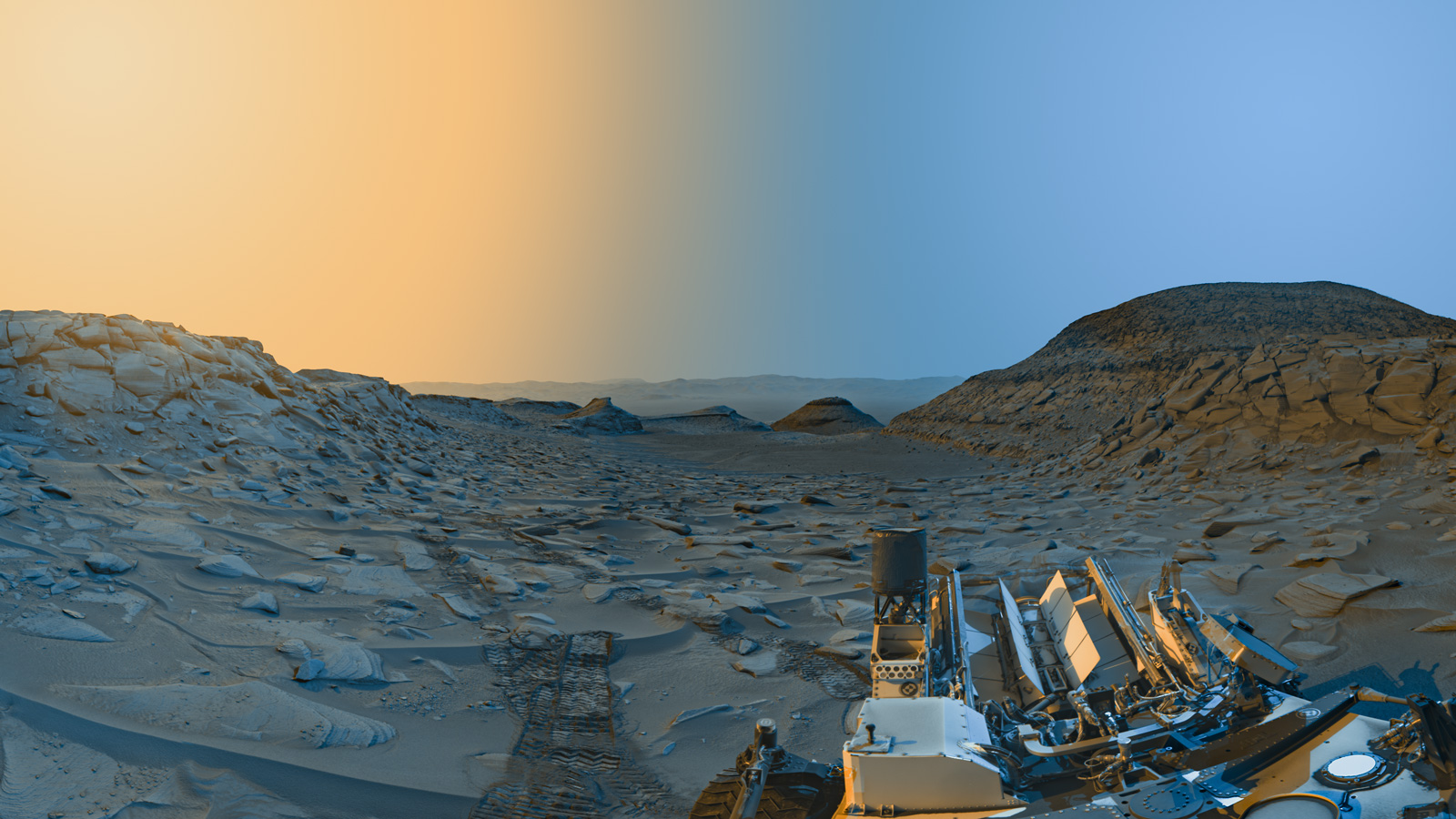NASA's Curiosity rover snaps extremely detailed 'postcard' of Martian landscape after waking up from a 'brain-boosting nap'
The new panorama snapped by NASA's Curiosity rover combines photos from two different times of day to create a highly detailed image of the Red Planet.
NASA's Curiosity rover recently snapped a stunningly detailed "postcard" of the Martian landscape, showing the sunlight shifting between morning and afternoon. The wandering robot beamed the picturesque scene back to Earth shortly after waking up from a "brain boosting nap."
The rover captured the memento April 8, or Sol 3,794 (Martian days) of its mission, shortly before leaving the Marker Band Valley, a region where it discovered signs of an ancient lake in 2022. The photoshoot was one of the first actions Curiosity completed after hibernating for a software update between April 3 and April 7, which included 180 individual upgrades — the most important of which will allow the rover to process images of its surroundings faster and reduce wear on its tires, which will help it to move much quicker across the Martian landscape, Live Science's sister site Space.com reported.
The new panorama is a composite of two images, one taken in the morning and the other in the afternoon. Combining the light of the sun from two different angles creates an image with much greater detail than a standard photograph, NASA representatives wrote in a statement.
Related: Curiosity rover discovers that evidence of past life on Mars may have been erased
"Anyone who's been to a national park knows the scene looks different in the morning than it does in the afternoon," Doug Ellison, an engineer at NASA's Jet Propulsion Laboratory in Southern California who runs Curiosity's camera team, said in the statement. "Capturing two times of day provides dark shadows because the lighting is coming in from the left and the right, like you might have on a stage – but instead of stage lights, we're relying on the Sun."
The original image is actually black and white, but color has been added to highlight the rock formations and to mimic the color of the sky during morning and afternoon.
This is the second time that Curiosity has captured an image in this way. The rover also snapped a similar split-time photo in November 2021. However, the latest postcard is much more detailed than its first attempt, likely because the photo was snapped during Mars' winter when there is less atmospheric dust, Ellison said. (The rover rarely takes images like this because the rover would need to remain in one place all day, which limits how much data it can collect.)
Get the world’s most fascinating discoveries delivered straight to your inbox.
The new postcard is not the only spectacular scene that Curiosity has recently snapped. In February, the rover captured one of the clearest-ever images of "sun rays," a phenomenon caused by the sun's rays shining through clouds while the sun is below the horizon, on the Red Planet.
In addition to grand landscape shots, the rover has also turned its camera downward to shoot some up-close shots of interesting mineral formations. In February 2022, the rover caught a glimpse of a flower-like mineral and, on April 15 this year, it spied a tiny rock in the shape of a book.

Harry is a U.K.-based senior staff writer at Live Science. He studied marine biology at the University of Exeter before training to become a journalist. He covers a wide range of topics including space exploration, planetary science, space weather, climate change, animal behavior and paleontology. His recent work on the solar maximum won "best space submission" at the 2024 Aerospace Media Awards and was shortlisted in the "top scoop" category at the NCTJ Awards for Excellence in 2023. He also writes Live Science's weekly Earth from space series.




